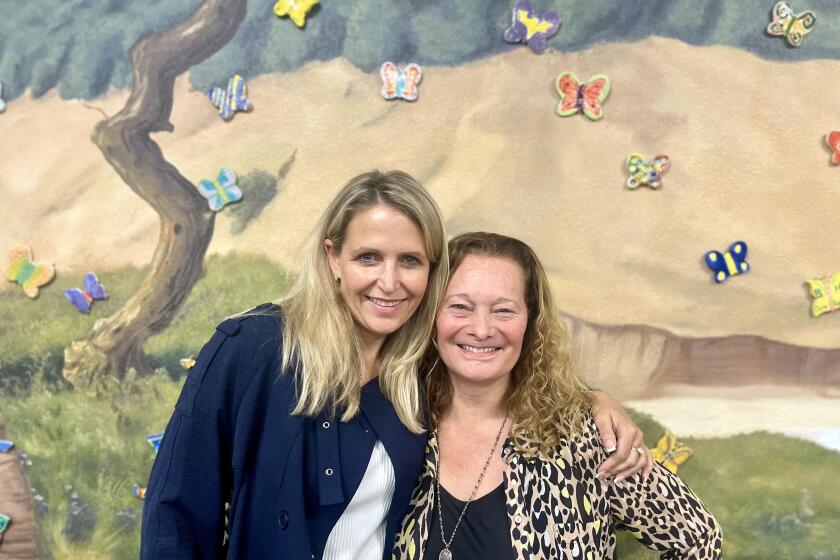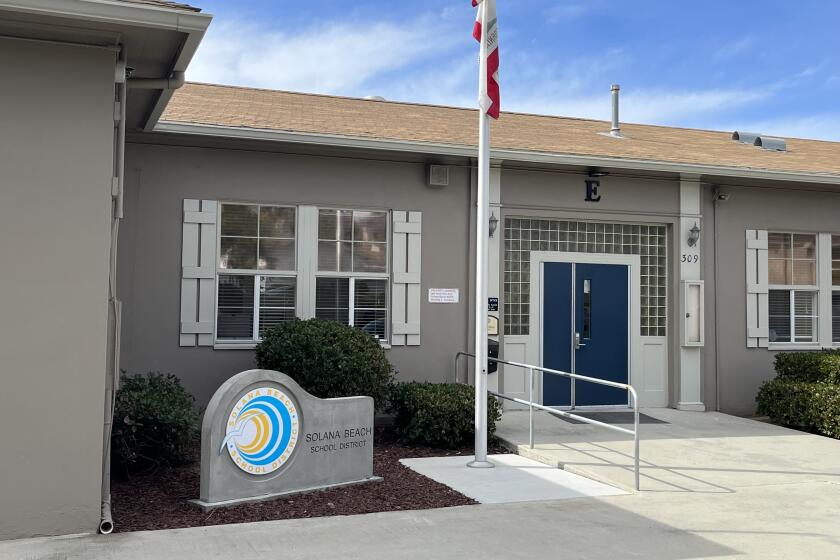SDUHSD classified teachers receive salary boost
The San Dieguito Union School District board approved pay raises for all classified employees at its Sept. 13 meeting -- .05 percent salary increases that have already been given to all management and certificated teachers. The California School Employees Association (CSEA) reached a tentative agreement for the 2017-2018 school year that was ratified by the general membership on June 14 this year but it had not yet been officially approved by the board.
The vote to approve the raises was 4-1 with trustee John Salazar in opposition.
“I understand that the budget is tight, however, CSEA is the only group that has not received a pay increase and it results in many negative emotions,” said Roberta Blank, a 20-year classified employee at the district who is currently an administrative assistant at Carmel Valley Middle School. “At best it makes us feel that we are not appreciated or valued in our school community. At worst, it makes us feel like we just don’t matter.”
“The classified staff is the backbone of our schools,” asserted Amy Gibson, a Canyon Crest Academy and Carmel Valley Middle School parent. “They are no less indispensable than our teachers and our administrators...As a parent volunteer I rely on classified staff all of the time, every day that I am at school."
In voting to support the pay increases, trustees said they do value the contributions that classified staff makes to the district. San Dieguito Union High School District (SDUHSD) Vice President Mo Muir said they are often the face of the campus, the first to greet students and parents with a smile, as well as supporting teachers and keeping campuses looking beautiful.
“We value our classified staff tremendously,” said SDUHSD Clerk Joyce Dalessandro. “Without classified staff, we wouldn’t exist as a district.”
According to SDUHSD Associate Superintendent for Business Services Tina Douglas, the .05 raise will be retroactive to July 2017 and will cost the district about $120,000 for one year. Douglas said she believes that the district can afford the increases noting that they closed the books on 2017-18 with an additional $5 million in the ending fund balance, bringing their deficit spending down from an anticipated $8 million at second interim to $3.1 million.
“This recommendation for a .05 percent raise assists our classified employees with the increase in last year’s health benefits as well as a small cost of living increase,” said SDUHSD Associate Superintendent of Human Resources Cindy Frazee. “It also keeps the district competitive in acquiring and retaining outstanding employees.”
In December 2017, the board approved the same .5 percent salary increases to all certificated employees and in April, the board approved the same pay raises for all management employees, both retroactive to July 1, 2017. The total cost of the raises for the certificated group was $370,844 and for the management and non-represented employees, it was $44,700.
Salazar voted against the classified staff salary increases just as he did against the raises in December and April—the management raises he said he “vehemently opposed." He also opposed the 12.5 percent raises in the 2015-16 school year.
“There gets to be a time when we look at the budget and say we just can’t afford this,” Salazar said. “To put bad on bad, the retroactive pay raise is ridiculous. It doesn’t happen in the real world, I’d never heard of it until I became a member of this board. I think it’s absurd.”
The district is projecting a $3.7 million deficit for the 2018-19 school year and Douglas said that staff will continue to look at ways to reduce spending.
During public comment, taxpayer Rita Raden said she is still very concerned about the deficit and its impact on the reserves.
“I think we really need to have a real-world discussion about our finances,” she said, echoing fellow taxpayer Wendy Gumb’s request for a forensic audit before the new superintendent comes on board.
Gumb also made a suggestion for the district high school foundations moving forward, proposing a more collaborative and inclusive fundraising effort. Rather than have four foundations at each high school site, Gumb suggested having Parent Teacher Student Associations at each high school to run activities and then having one district-wide foundation. She said a district-wide foundation would cut out a lot of the overhead it takes to run the four individual foundations, which she said amounts to about $800,000.
“We have an extremely generous community who basically throws money into this community,” Gumb said. “We could be filling the gaps so much better than we’re doing.”
Get the Del Mar Times in your inbox
Top stories from Carmel Valley, Del Mar and Solana Beach every Friday for free.
You may occasionally receive promotional content from the Del Mar Times.










